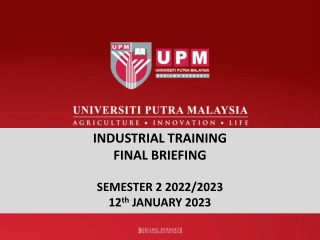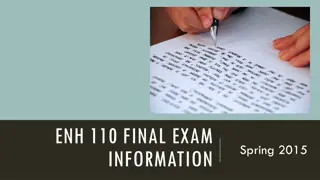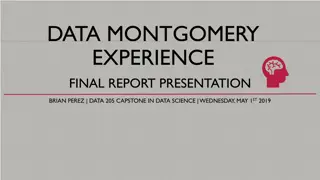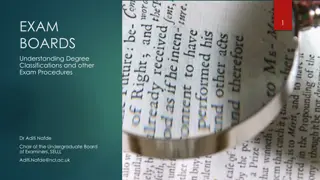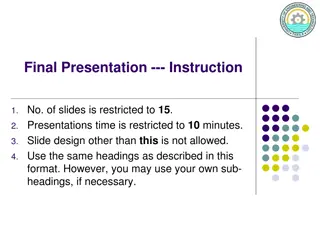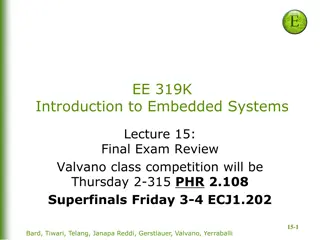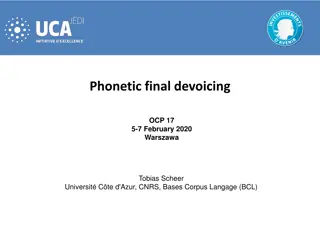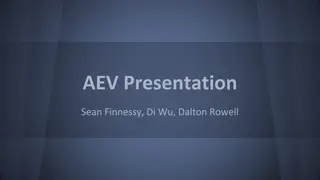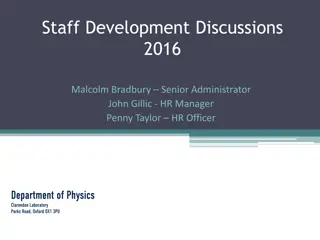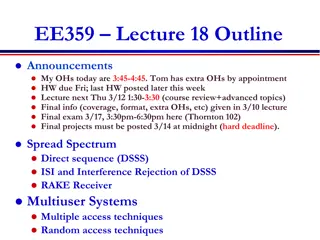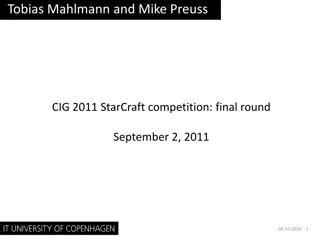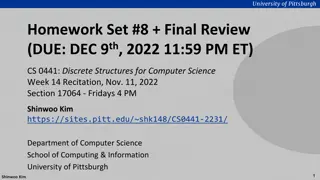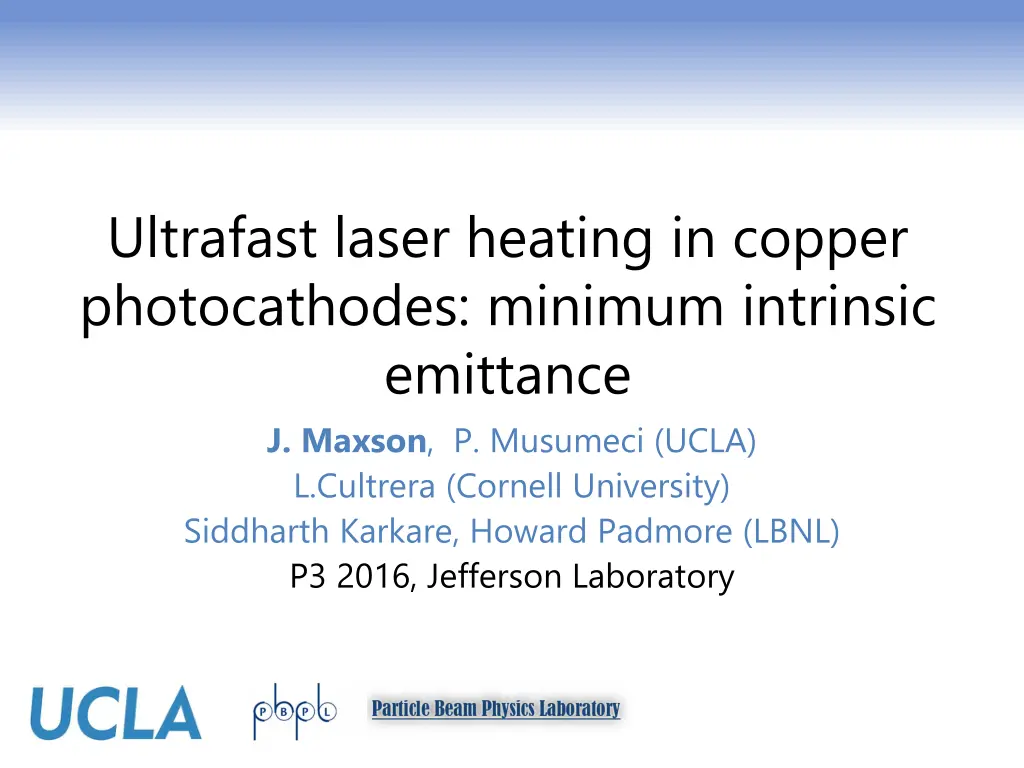
Laser Heating in Copper Photocathodes
Explore the impact of ultrafast laser heating on copper photocathodes, electron thermalization, and emittance growth. Learn about the two-temperature model and electron-phonon coupling in metals like copper. Discover the critical role of electron temperature in quantum efficiency and mean time to emission.
Download Presentation

Please find below an Image/Link to download the presentation.
The content on the website is provided AS IS for your information and personal use only. It may not be sold, licensed, or shared on other websites without obtaining consent from the author. If you encounter any issues during the download, it is possible that the publisher has removed the file from their server.
You are allowed to download the files provided on this website for personal or commercial use, subject to the condition that they are used lawfully. All files are the property of their respective owners.
The content on the website is provided AS IS for your information and personal use only. It may not be sold, licensed, or shared on other websites without obtaining consent from the author.
E N D
Presentation Transcript
Ultrafast laser heating in copper photocathodes: minimum intrinsic emittance J. Maxson, P. Musumeci (UCLA) L.Cultrera (Cornell University) Siddharth Karkare, Howard Padmore (LBNL) P3 2016, Jefferson Laboratory
Ultrafast laser heating of electrons in metals In Cu, the electronic heat capacity is roughly 1/100thof the lattice heat capacity: C?= ???~0.01?? Intense, ultrafast photoexcitation can heat the electronic distribution very rapidly, leaving the lattice relatively cold! Well studied effect! Examples: K. Jensen et al, J. Hohlfeld et al, Chem Phys. (2000) Fann et al, PRL 68, 18 1992 J. Appl. Phys. 99, 124905 (2006) 1.9 mJ/cm2 Time (ps) Equilibration with lattice can take multiple ps. Low QE of metals often requires fluences ~10 mJ/cm2 What are the consequences of this heating on emittance?
Timeline of thermalization and equilibration Excitation at the surface and ballistic electron motion. Ballistic electron motion increases effective penetration depth of excitation. Electrons reform a hotter FD-distribution from e-e scattering, after a finite thermalization time, and begin diffusion into the bulk On the ps timescale, electrons and phonons scatter, and equilibrate. Standard heat diffusion thereafter. Figure from: J. Hohlfeld et al, Chem Phys. (2000).
Electron Thermalization time If the laser heats the electrons it emits, you can pay a big pricein MTE due to low QE at threshold. However, are the electrons photoemitted from RT or excited distribution? How long does electron thermalization take? Answer: Thermalization is fast, and depends on excitation fluence. Figure from: Mueller & Rethfeld, PRB 87, 035139 (2013) 1 mJ/cm2 thermalizes in <10fs! For our case, 100 fs pulses with multiple mJ/cm2 Assume immediate thermalization
QE and MTE vs Temperature Electron temperature plays a critical role in MTE and QE: Finite-temperature extended Dowell formulae [T. Vecchione, FEL2013] ???= ? ???? MTE (meV) QE at threshold strongly dependent on temperature ??? 3 ??/?? ??? ??2 ????/?? J.B. Rosenzweig et al, arXiv:1603.01657 (2016)
Two-temperature model We use the two-temperature model to calculate emittance growth due to ultrafast heating in Cu. Electrons and lattice are treated as interacting thermalized subsystems Electron thermal conduction Electron-phonon coupling Laser source term Electron ??: Lattice ??: Penetration depth Source term: J. Hohlfeld et al, Chem Phys. (2000). ?? must be increased by electron ballistic range. ??= ? 1+ ????? 100 ?? it works! Phenomenological, but
TTM on Cu photocathodes (1) 10 mJ/cm2 absorbed on Cu, with a rms duration of ??= 300 fs. Eex= 0.9 eV Eex= 0.36 eV Eex= 0 eV J. Maxson et al., NIMA (2016)
TTM on Cu photocathodes (2) Same case as before, but stretch pulse length to ??= 3 ps. Takes advantage of e-phonon coupling to reduce peak T! Eex= 0.9 eV Eex= 0.36 eV Eex= 0 eV J. Maxson et al., NIMA (2016)
Minimum achievable emittance in practice Define a mean QE and mean MTE over the whole pulse: MTE is dominated by when QE is high when the distribution is hot Typically one sets the charge density for a given application in practice by the proximity to the space charge limit. Pancake regime: ? < ?0????, typically ? = ?.? ?0???? to avoid space charge distortion issues. This relates the required (absorbed) fluence and QE: ? ?.? reflectivity
Minimum achievable emittance in practice With the charge density set constant, intrinsic emittance vs. excess energy is not monotonic! Example: Extract 44 extraction field on clean copper (?0= 4.31 eV,R 0.35 in the UV) pC mm2= 0.1 ?0???? for 50 MV/m QE at zero fluence set comparable to: Dowell et al, PRSTAB 9 063502 (2006) 0.5 ??/?? (307 nm) (279 nm) An optimum wavelength exists! Here, optimum fluence (~2 mJ/cm^2)
Minimum achievable emittance in practice What if the QE is lower, or you want to extract more charge? (Decreasing QE equivalent to Increasing charge density) Approaching threshold to get emittance gains only when QE is high or required charge density is low!
Summary Intense lasers will generate hot electrons out of equilibrium with lattice. Thermalize quickly for photoinjector fluences TTM model shows that laser heating can spoil near- threshold emittance gains due to low QE. An optimum wavelength exists that minimizes ??? and heating. New regime of operation where charge setpoint controls intrinsic emittance In the future: Pump-probe measurements in a photogun are planned: emittance measurement as time resolved two photon spectroscopy!
Acknowledgements This work was supported by the DOE STTR award DE-SC0009656 and NSFPHY- 1415583. Many thanks to helpful conversations with Daniele Filippetto and Renkai Li, and David Cesar Thanks!
If the distribution isnt in equilibrium Figure from: Mueller & Rethfeld, PRB 87, 035139 (2013) Ni .it is still wide.

